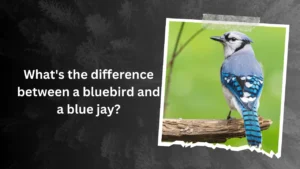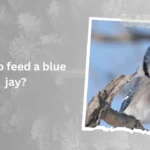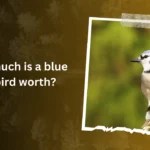With their bold blue feathers, sharp intelligence, and unmistakable calls, blue jays are hard to miss in any backyard.
Known for their remarkable memory and curiosity, these birds are not just pretty to look at—they’re fascinating creatures with a surprising ecological role. From caching acorns and seeds to their role as natural “guards” in the bird community, blue jays bring unique behaviors and benefits that make them unlike any other backyard visitor.
But, as striking as they are, these birds come with their share of quirks that can either enhance or challenge the balance of your outdoor space.
For those who welcome a diverse range of birdlife, understanding the pros and cons of attracting blue jays can make all the difference. While blue jays are excellent seed dispersers and contribute to tree growth, they can also be aggressive toward smaller birds, raiding nests and monopolizing feeders.
Striking a balance between supporting natural wildlife and protecting your yard’s delicate ecosystem is key, and that’s where knowing more about these birds’ behaviors comes in.
In this post, we’ll explore whether having blue jays in your yard is truly beneficial and how to maximize the positives of their presence while managing potential downsides. By learning about their habits and ecological impact, you’ll gain insights to make the best choices for your garden and for the wildlife you hope to attract.
Contents
- 1 Benefits of Blue Jays
- 2 Potential Drawbacks
- 3 Balancing Benefits and Drawbacks
- 4 Ethical Considerations
- 5 Coexistence with Wildlife
- 6 Conclusion
- 7 FAQ’s
- 7.1 What are the benefits of having blue jays in my yard?
- 7.2 How can blue jays negatively impact other birds?
- 7.3 What strategies can I use to create a bird-friendly garden?
- 7.4 Do blue jays eat fruits and vegetables from my garden?
- 7.5 How can I deter blue jays while still attracting other birds?
- 7.6 What are the ethical considerations when managing blue jays?
Benefits of Blue Jays
Blue jays bring a range of ecological benefits to any garden they frequent, playing essential roles that contribute to the health of local ecosystems. One of their most valuable contributions is seed dispersal.
Known for hiding acorns and other seeds across large areas, blue jays often forget about some of these “buried treasures,” leading to natural reforestation as new plants and trees sprout from the seeds they leave behind.
In this way, they act as natural planters, promoting tree growth and biodiversity that benefits countless other species over time.
In addition to aiding plant life, blue jays also contribute to pest control. As omnivores, they eat a variety of insects, including beetles, caterpillars, and grasshoppers. By keeping pest populations in check, blue jays help reduce the need for artificial pesticides, creating a healthier environment for all garden wildlife.
Their presence can therefore foster a more balanced, sustainable ecosystem where plants and other animals can thrive together.
Of course, blue jays also bring a unique aesthetic value to any yard. Their vibrant blue feathers and bold behaviors add color, sound, and energy to a garden, making them delightful to observe.
For bird enthusiasts and casual observers alike, blue jays offer the joy of seeing one of nature’s most striking and intelligent birds up close, making your garden not just a green space but a lively, dynamic habitat.
Potential Drawbacks
While blue jays offer numerous benefits, they also come with certain challenges that can make them less welcome in some gardens.
Known for their aggressive behavior, blue jays are often territorial and may chase off smaller birds, dominating feeders and taking over spaces intended for other species. This assertive nature can reduce the variety of bird species in your yard, potentially impacting local biodiversity.
For those hoping to host a peaceful bird haven, blue jays’ presence can make it difficult to maintain balance among different bird populations.
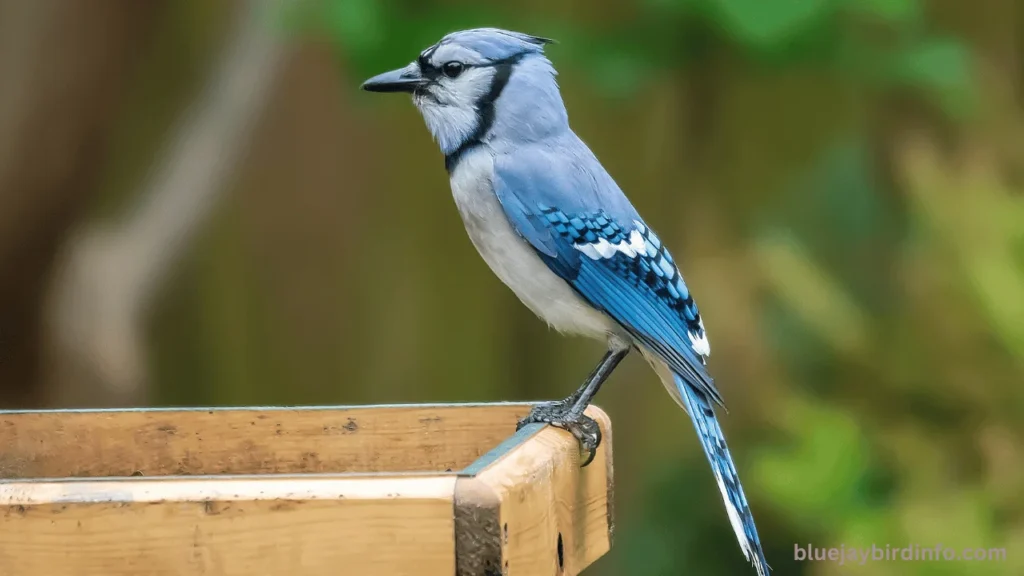
In addition to their impact on other birds, blue jays can also be a nuisance to gardeners. Their love of fruit and vegetables can lead to damage, as they often raid gardens to feed on ripening produce.
They’re clever enough to access even well-protected crops, making it a challenge for those hoping to cultivate their own plants without interference. Some blue jays are also known to peck at window frames, roofing, and other structures, which can result in property damage that adds frustration for homeowners.
Finally, attracting blue jays may increase the risk of predation on other bird species. Blue jays sometimes prey on the eggs or young of smaller birds, impacting the survival of these more vulnerable species.
Additionally, as with all wildlife, there’s a small risk of disease transmission among dense bird populations. While this is a lesser concern, it’s still worth considering when encouraging blue jays into your yard.
Balancing the enjoyment of having blue jays around with the potential downsides is key to creating a thriving and diverse outdoor space.
Balancing Benefits and Drawbacks
Successfully managing blue jay populations in your yard requires a thoughtful approach that balances their benefits and drawbacks. One effective strategy is to create a diverse and balanced ecosystem that naturally accommodates various bird species while allowing blue jays to coexist with them.
Providing multiple feeding stations can help distribute food sources, ensuring that blue jays don’t monopolize feeders and giving smaller birds a chance to access food without harassment.
Incorporating native plants into your garden design can also support a wider range of wildlife, as these plants offer food and shelter for different bird species, promoting a healthier, more varied ecosystem.
When considering the need to deter blue jays, it’s essential to reflect on the ethical implications of such actions. Rather than attempting to eliminate or harm blue jays, focus on non-lethal methods that encourage coexistence.
Implementing tactics such as installing barriers around gardens or providing designated feeding areas can help minimize conflicts without resorting to aggressive measures. It’s crucial to remember that blue jays play a role in their ecosystem, and fostering harmony among species will yield greater benefits in the long run.
By embracing a mindset of coexistence and respecting the needs of all wildlife, you can enjoy the vibrant presence of blue jays while maintaining the well-being of your garden and its inhabitants. Ultimately, promoting a thriving environment for diverse bird species not only enhances your outdoor space but also contributes to the health of local ecosystems as a whole.
Ethical Considerations
When it comes to managing wildlife, particularly blue jays, it is vital to prioritize humane and ethical methods that protect both the birds and the ecosystem.
While it may be tempting to resort to harmful or aggressive tactics to deter blue jays, such methods can have unintended negative consequences on wildlife and the environment.
For example, using poisons or traps not only risks harming blue jays but can also affect non-target species, including other birds, pets, and beneficial wildlife. Such actions can disrupt the delicate balance of the ecosystem, leading to cascading effects that harm plant and animal life in the area.
It’s crucial for bird enthusiasts and gardeners to consider the long-term consequences of their choices. Opting for ethical, non-lethal strategies not only helps protect blue jays but also fosters a more harmonious coexistence with all species.
Simple practices like providing alternative feeding options or enhancing habitat can significantly reduce conflicts while maintaining the health of your garden. If you’re unsure about the best approaches to take, don’t hesitate to seek advice from wildlife experts.
They can offer valuable insights into effective and responsible management techniques that respect all creatures and promote ecological balance.
By committing to ethical wildlife management, you not only enhance your garden’s environment but also contribute to a more sustainable world where humans and wildlife can thrive together. Making informed decisions today ensures a healthier ecosystem for future generations, benefiting both people and wildlife alike.
Coexistence with Wildlife
Coexisting with wildlife is essential for maintaining a healthy ecosystem and minimizing negative impacts on their habitats. When we create environments that support diverse species, we contribute to the overall biodiversity that benefits our planet.
By fostering a sense of harmony with the wildlife around us, we help ensure that both birds and humans can thrive. This cooperative approach allows us to enjoy the beauty of nature while also protecting the vital roles that each species plays in the environment.
To create a bird-friendly garden that attracts a variety of species, including blue jays, consider incorporating native plants, which provide food and shelter for local birds. Establishing a range of habitats—such as shrubs, trees, and flower beds—can offer safe nesting sites and foraging opportunities.
Adding features like bird baths and feeders can also encourage a diverse array of visitors, drawing in not only blue jays but also sparrows, finches, and other birds. By designing your garden with biodiversity in mind, you can create a welcoming space that benefits both the wildlife and your enjoyment of nature.
Attracting a diverse range of birds to your yard brings numerous benefits, such as natural pest control and pollination. Different bird species have unique roles in the ecosystem, from eating insects to dispersing seeds, contributing to the health of your garden.
Moreover, a vibrant bird population enhances your outdoor experience, providing opportunities for birdwatching and connection with nature.
By embracing coexistence and creating an environment that supports various species, you’re not just enhancing your yard; you’re actively participating in the stewardship of our shared natural world.
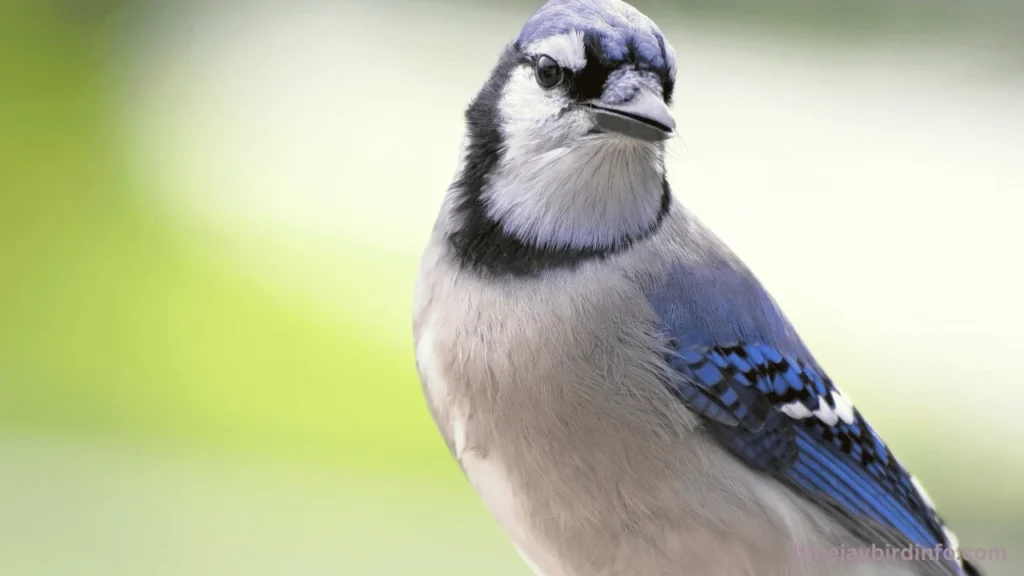
Conclusion
In summary, having blue jays in your yard comes with both benefits and drawbacks. On the positive side, blue jays contribute to seed dispersal, help control pest populations, and add vibrant color and life to your garden.
However, their aggressive behavior can disrupt smaller bird species, and their penchant for raiding gardens can lead to challenges for gardeners. Understanding these aspects allows you to make informed decisions about how to manage their presence while enhancing your outdoor space.
Balancing the needs of humans and wildlife is crucial for creating a harmonious environment. While it’s natural to want to protect your garden, it’s equally important to consider the ecological role that blue jays and other wildlife play.
By adopting compassionate and thoughtful strategies, you can enjoy the beauty and benefits that blue jays offer while also supporting a diverse range of bird species in your yard.
As you reflect on the role of blue jays in your garden, I encourage you to learn more about their behavior and the ecological importance they hold in local ecosystems.
By gaining a deeper understanding of these remarkable birds, you can foster a greater appreciation for the complexity of nature and make choices that support both wildlife and your gardening goals.
Also, read other articles related to Blue Jay Habits!
FAQ’s
What are the benefits of having blue jays in my yard?
Blue jays assist in seed dispersal, control insect populations, and add vibrant color and energy to your garden.
How can blue jays negatively impact other birds?
Blue jays can be aggressive toward smaller birds, often dominating feeders and preying on their eggs or young.
What strategies can I use to create a bird-friendly garden?
Incorporate native plants, provide water sources like bird baths, and set up multiple feeding stations to attract various bird species.
Do blue jays eat fruits and vegetables from my garden?
Yes, blue jays are known to raid gardens for fruits and vegetables, which can lead to damage if not managed.
How can I deter blue jays while still attracting other birds?
Implement non-lethal deterrents such as installing barriers around gardens, using selective feeding areas, and providing alternative food sources.
What are the ethical considerations when managing blue jays?
It’s important to use humane methods that respect wildlife and their ecological roles, avoiding harmful tactics that could disrupt the ecosystem.



